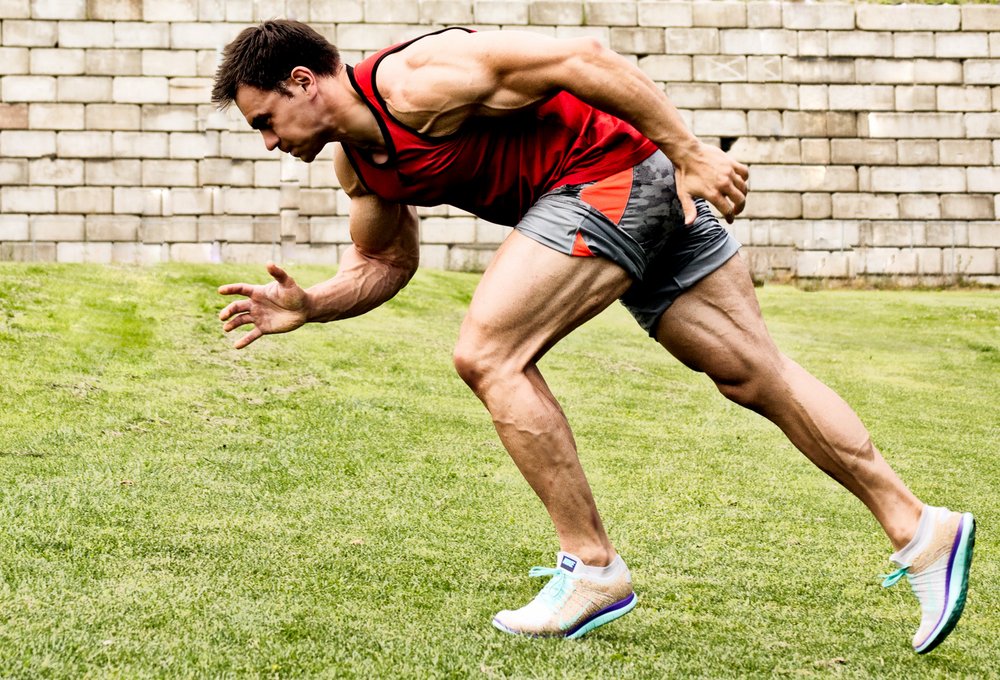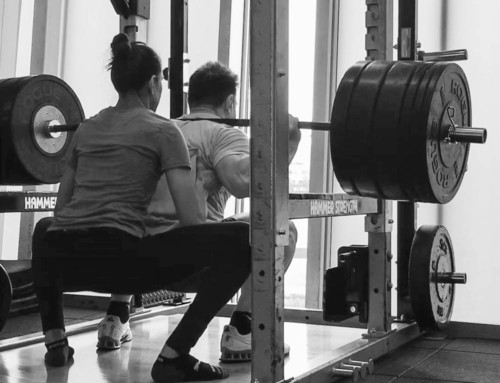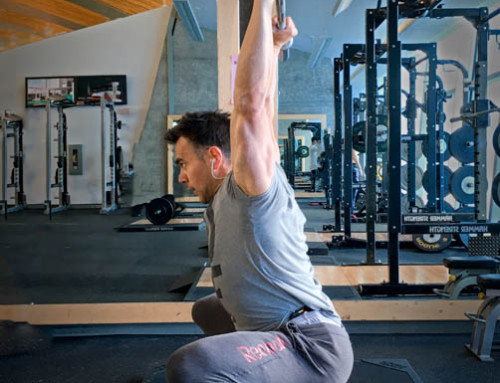Most of us link aerobic training to cardio but may not be familiar with anaerobic training. You can read more about the differences between the two at Aerobic vs. Anaerobic training. Anaerobic training includes any style of exercise where demand for force production is higher than demand for oxygen by the body. To clarify, when it comes to energy production under greater tension, the body doesn’t have time to utilize oxygen to it’s full capacity. Energy production by way of aerobic respiration takes time, but when you are squatting under a heavy bar and ready to stand up, that is when the anaerobic system kicks into gear. Other examples that utilize this system include but not limited to sprinting protocols, high intensity interval training (HIIT), and high intensity (heavy) weightlifting – as mentioned in the title, routines that kick it up a notch. Training in such methods carries many benefits including a Stronger, Leaner, Faster body. Anaerobic exercises often involve but not limited to short bursts of intense activity lasting brief durations of time (seconds to minutes) in order to produce force.
 Benefits of Anaerobic Training
Benefits of Anaerobic Training
Fat Burning
Anaerobic training uses the Glycolysis System as a major energy producer. This requires the uptake and conversion of sugars to produce energy as well as maintenance of overall glucose metabolism. We can all afford to burn off a few carbs and later replenish these stores by burning fat during rest. This process works during exercise by:
- First, utilizing ready-made ATP in muscles; and
- Second, by tapping into the glycogen stores in the muscles and liver to produce more ATP.
After exercise, fat stores are utilized to greater extent during recovery and rest. Even after glycogen levels are topped back up, the recovery from anaerobic training continues on well into 2 – 3 days in order to restore serum hormone levels, repair muscle tissue and clear metabolites (byproducts) and cellular debris – a major supply of energy for all these biochemical processes is supplied via fat stores.
The Glycolysis System burns a lot of sugars compared to if we were using fat to provide equivalent energy. Burning one molecule of sugar produces 2 ATP verses 36 ATP produced by burning one molecule of fat (triglyceride). So, you will burn 18x more sugar molecules to produce the same energy as 1 molecule of fat. That’s a lot of sugar being utilized that will later need to be replaced – either when you carb up or by burning stored fat when oxygen supply increases during rest and recovery.
Anaerobic training also creates byproducts (hydrogen ions) within the muscles. These begin to affect muscular contractibility through a burning sensation (sore muscles). The benefit here, your muscles continue to work through subpar optimum conditions – producing force while accumulating fatigue. The greater the fatigue, the greater the amount of energy necessary for recovery; bulk of which is supplied by body fat reserves.
EPOC Effect
Anaerobic training results in an oxygen deficit that will need to be replenished soon after exercise. Fat burning and oxygen go hand in hand – your body will need to generate energy and begin restoring and replenishing to a new resting state creating adaptations. Because of this, your body increases its oxygen consumption during post-exercise known as EPOC (excess post-oxygen consumption).
Benefits of EPOC are experienced in the recovery period. Here, fat stores are transformed to energy using aerobic system (oxygen) towards replenishing depleted ATP and glycogen levels, hormone balance, and any tissue repair. This excess rate of oxygen consumption lasts up to 38 hours post-exercise. Thereby, increasing your overall metabolic rate.
 Improved VO2max
Improved VO2max
If EPOC is oxygen consumption after the exercise, VO2max is the oxygen consumption during exercise. As with EPOC, anaerobic training will also improve your VO2max. VO2max also known as maximal oxygen consumption/uptake is predominantly measured during aerobic exercise (with oxygen). However, when we engage in any type of physical activity, we never use only one type of energy system, but a combination of all three simultaneously. Contribution of each energy system (ATP-CP, Glycolysis or Oxidative) depends on the level of force production required.
This simply means that during anaerobic conditions the body is not using oxygen for majority of force production during exercise, but it still uses some. Therefore, by increasing your ability to consume more oxygen (VO2max) during exercise generates a more effective Oxidative System. The most effective way to increase VO2max is through HIIT (high intensity interval training) style protocols, where oxygen consumption is continuously changed during intervals of intensity and rest.
Increased Strength and Work Capacity
By performing exercises with intensity (whether cardio or weight training capacity), your neuromuscular and central nervous systems (CNS) are engaged; producing appropriate force to cope with presented physical stimulus. As training session continues, CNS signals for the body to recruit bigger muscle (fast-twitch) fibers capable of stronger contractions. Such contractions often result in micro-tears throughout muscle fibers and will need to be repaired during recovery, which result in myofibrillar and sarcoplasmic hypertrophies. Both of these hypertrophies translate into greater lean body mass and greater glycogen storage. Bigger muscles also means increase in strength. Muscle is a metabolically active tissue that requires greater energy maintenance – increased metabolism.
Training in anaerobic environment will generate chemical byproducts (hydrogen ions and lactate) as well as microtrauma to muscle fibers that affect contractibility; increasing fatigue and contributing to delayed onset muscle soreness (DOMS). DOMS are often the burning pain or stiffness felt in muscles several hours to three days after the exercise. During recovery, muscle tissue is repaired adapting to future physical stimulus by becoming bigger in diameter and thus, capable of producing more force for that particular exercise. With continued training muscles become more conditioned and able to resist greater levels of fatigue than ever before.
Final Thoughts
There are many benefits of anaerobic training, most leading towards a stronger, leaner and faster body translating to better overall performance. It is true that training your anaerobic system hurts, but we are all aware of the saying, no pain no gain. Check out our books for a program designed around utilizing energy systems for maximum benefits.
Connect with us on Social Media or Subscribe to be notified of latest article updates and free-bies.





